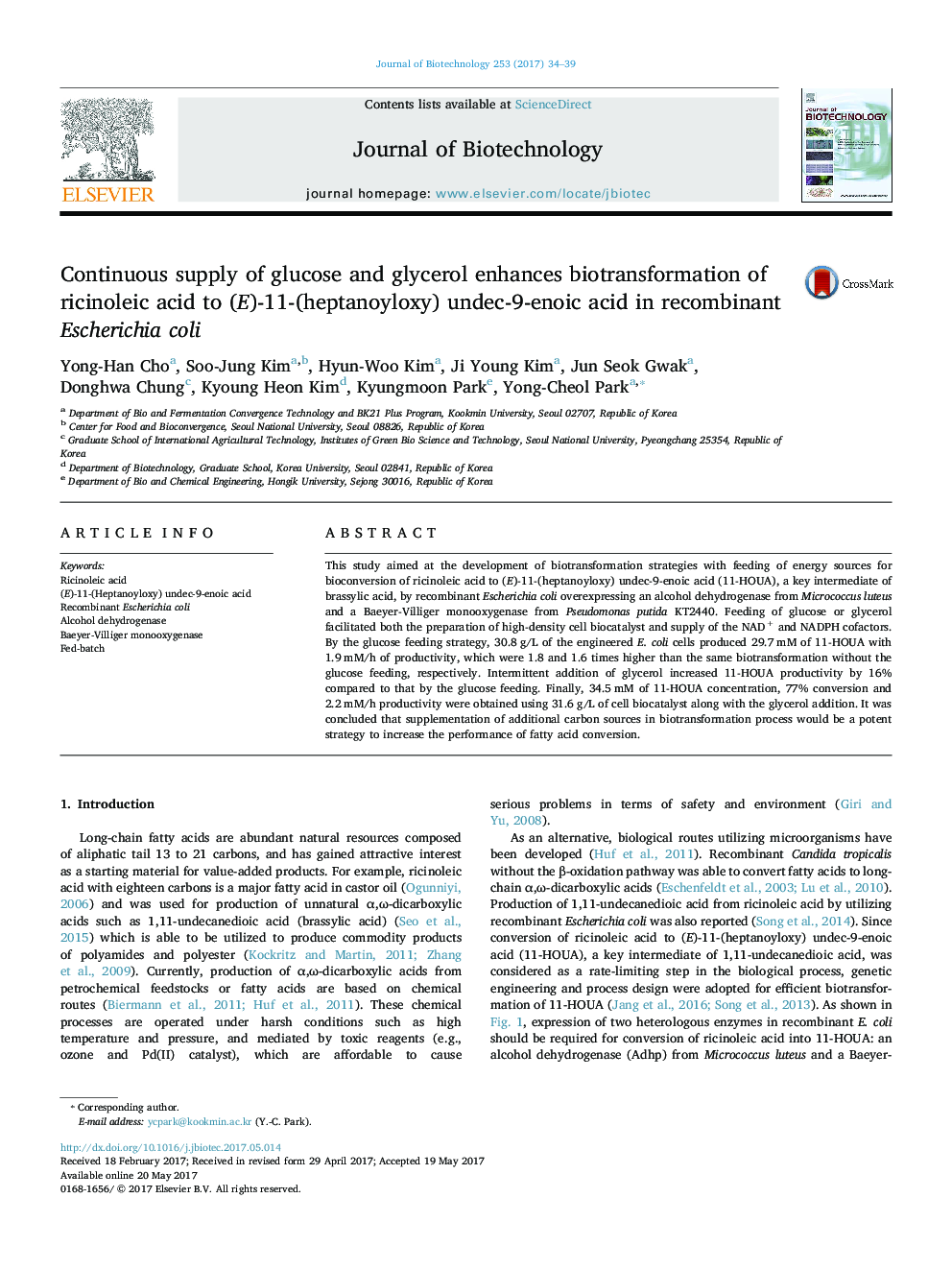| Article ID | Journal | Published Year | Pages | File Type |
|---|---|---|---|---|
| 4753660 | Journal of Biotechnology | 2017 | 6 Pages |
Abstract
This study aimed at the development of biotransformation strategies with feeding of energy sources for bioconversion of ricinoleic acid to (E)-11-(heptanoyloxy) undec-9-enoic acid (11-HOUA), a key intermediate of brassylic acid, by recombinant Escherichia coli overexpressing an alcohol dehydrogenase from Micrococcus luteus and a Baeyer-Villiger monooxygenase from Pseudomonas putida KT2440. Feeding of glucose or glycerol facilitated both the preparation of high-density cell biocatalyst and supply of the NAD+ and NADPH cofactors. By the glucose feeding strategy, 30.8Â g/L of the engineered E. coli cells produced 29.7Â mM of 11-HOUA with 1.9Â mM/h of productivity, which were 1.8 and 1.6 times higher than the same biotransformation without the glucose feeding, respectively. Intermittent addition of glycerol increased 11-HOUA productivity by 16% compared to that by the glucose feeding. Finally, 34.5Â mM of 11-HOUA concentration, 77% conversion and 2.2Â mM/h productivity were obtained using 31.6Â g/L of cell biocatalyst along with the glycerol addition. It was concluded that supplementation of additional carbon sources in biotransformation process would be a potent strategy to increase the performance of fatty acid conversion.
Keywords
Related Topics
Physical Sciences and Engineering
Chemical Engineering
Bioengineering
Authors
Yong-Han Cho, Soo-Jung Kim, Hyun-Woo Kim, Ji Young Kim, Jun Seok Gwak, Donghwa Chung, Kyoung Heon Kim, Kyungmoon Park, Yong-Cheol Park,
